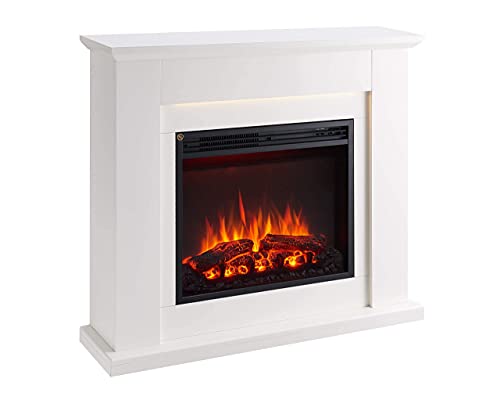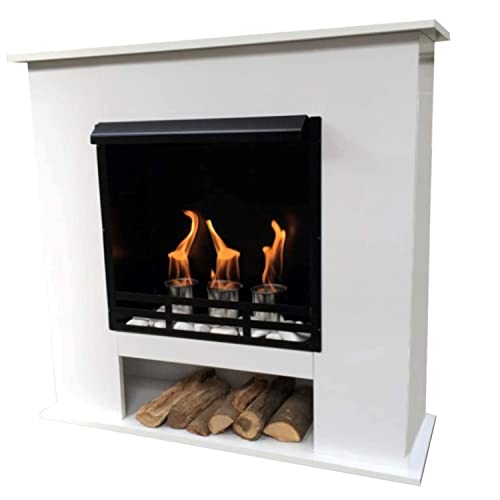10 Myths Your Boss Has About Fireplace Surround Fireplace Surround
페이지 정보
작성자 Roxanna 작성일24-02-04 05:46 조회5회 댓글0건관련링크
본문
 Choosing a Fireplace Surround
Choosing a Fireplace SurroundIf you're using fireplaces for aesthetics or warmth, the perfect surround can make your living space more unique. But choosing a fireplace surround that meets standards and is safe can be a daunting task.
Fortunately, these custom-built surrounds are made of non-combustible materials and adhere to the National Fire Code. They look great in any style of home.
Simple Concrete Surround with Marble Slabs
A fireplace surround can be an important focal point in a room, and can add warmth and charm. It is constructed using a range of materials and be designed to fit different styles of design. Before you decide on the wall fireplace a fireplace design it is important to consider the design and budget of the room.
Marble fireplace surrounds are a classy option that can be paired with a wide range of design styles. They can be paired with rustic woods or more modern metals to create a unique and contemporary style. Marble is easy to maintain, and can withstand high temperature making it a good choice for a surround.
Stone is a popular material for fireplace surrounds. It has a timeless appearance that is suitable for many homes. It can be carved or etched to create contemporary appearance or left unfinished to give it a traditional look. Stacked stone veneers can be used to add depth and texture to rooms.
Granite is a popular choice for modern fireplace surrounds due to the fact that it's durable and stands up to heat extremely well. It comes in a variety of designs and colors, making it possible to create a variety of designs. Quartzite is a second option that can be shaped and molded to fit a modern fireplace surround.
The installation of a concrete surround for a fireplace may be a possibility for DIYers. This task may seem daunting, but it can be much simpler than you think when you collaborate with professionals and think ahead.
It's also a good idea to speak with an expert when making a fireplace surround of marble, as it requires special care to prevent damage. A carpenter with experience can help you to avoid costly mistakes.
If you plan to use tile as an interior fireplace surround, be sure that it is rated for high temperatures. You'll typically find this information on the package or ask an employee at a home improvement shop.
Leaning Frame Surround
The fireplace's surround can transform an area. It is not only aesthetically pleasing but also serves a practical function. It protects the electric wall mounted fireplaces surrounding the fireplace from deterioration and reflects heat back into the space. It is available in a variety materials and can be adapted to match any style or décor.
Choosing the right material for the frame's leaning surround is crucial to create an aesthetic that is purposeful. Concrete is a great option because it's extremely durable and non-flammable. It also has a lot of visual appeal thanks to its natural texture and color. It's usually put into a mold, giving you the ability to create a unique shape for your fireplace surround.
Layers are crucial when creating your leaning frames. This makes the frame appear more planned than if it were just randomly placed. Leaning frames are dangerous and should be avoided if you plan to display heavier objects such as vases or lamps, place a small piece of drawer liner made of rubber under the base to keep them from sliding or damaging surfaces.
If you're using a concrete or marble surround, consider adding wooden boards on the bottom to help keep it in the right place. It can also reduce the weight and keep the object from shifting while you enjoy a cup of coffee or wine in front of your fireplace.
Once you have decided on the material, it is time to build the actual piece. First, mark your new wall with the dimensions of the surround and then use a saw to cut cleats on each of these points. Ensure that the top cleat is at least one foot longer than the shelf.
Attach the brackets to the wall. Make sure that the bolts pass through the backer board and into the stud. If necessary, pre-drill the screw holes. Then, temporarily clamp the mantel on the backer board. Fix the mantel to studs using the lag bolts (2-4 bolts per stud). Make sure that the bolts are sufficient to cover 2/3 of the mantel's depth + the thickness of the backer board.
Black Firebox Surround
Fireplace surrounds serve both a decorative and functional purpose. They protect walls from damage from heat, reflect heat into the space and can make a fireplace an eye-catching feature in a space. The most common materials used for fireplace surrounds are metal and wood. Metal surrounds can be required by the building code in order to safeguard nearby combustible materials or they can enhance the appearance of a fireplace.
This fireplace is modern living room that has a black surround and white marble accents. The stone is a more expensive material that requires more attention than a wooden mantel but it adds a dramatic and striking design element to the room. The black finish also brings in the dark shades of the furniture and wood flooring to create a cohesive appearance.
Concrete isn't just used for sidewalks and driveways. It's also a beautiful and versatile material that can be used to surround fireplaces. It can be formed into custom shapes and poured in place, giving nearly limitless design options. This concrete surround was cut to a curved profile. It has modern and sleek appearance that contrasts with the darker shades of the brick wall and floor.
Wood is another popular material used for fireplace surrounds. It is available in a variety of textures and colors that will match any decor. Wooden surrounds are lighter and more affordable than brick surrounds and can be finished to match the color of your current hearth pad. Most wooden surrounds can be used to accommodate decorative items for the mantel, such as lamps and vases.
Some wood surrounds include a faceplate which covers the top of mantel and houses fireplace doors. This plate can be fixed using decorative hinges or fasteners that mimic the appearance of iron wrought.
It is important to take into consideration the size of your fireplace when selecting a wood mantel. To prevent a fire spreading to your home, building codes specify minimum clearances. The distance will vary based on the kind of fireplace you own and also from state state or country country.
Simple Wood Surround
If you want your fireplace to have a classic wood look, there are many different types of surrounds available for purchase. Some surrounds are made of solid oak, while others combine stone legs with oak or pine mantels. You can also select pine or oak fire surrounds, which are designed to be a cost-effective and easy option.
Many people prefer to purchase a pre-made wood fireplace surround because it is a cost-effective way to achieve the style they want without having to hire carpenters. Some pre-made fireplace surrounds made from pine come in a range of different finishes so that you can match it to your existing decor.
A handcrafted wood fire surround constructed from top quality oak is also popular. It can be stained with a light oak color or left untreated to let the natural light golden brown of the wood to show through. This fireplace surround is ideal for wood or gas-burning fires and is available either with an arched or flat opening.
If you have more experience in DIY home improvement projects, there are a lot of tutorials online that can help you create your own fire surround from wood. This step-by-step guide from H2O Bungalow will show you how to create an attractive wood surround with pine.
The tutorial shows how to construct the horizontal pilasters, and then the vertical pilasters which support the mantel. Once these are completed you can put in the mantel. The tutorial will show you how to install the crown molding, which will cover any gaps between the wall's cladding and the wall surrounding it.
It is essential to adhere to the local fire code when putting in a wooden surround around the fireplace. You should keep the surround at least 6 inches from the edge of the opening. Use a non-flammable glue join the decorative molding to the surround and ensure it is held in the proper position.

댓글목록
등록된 댓글이 없습니다.

